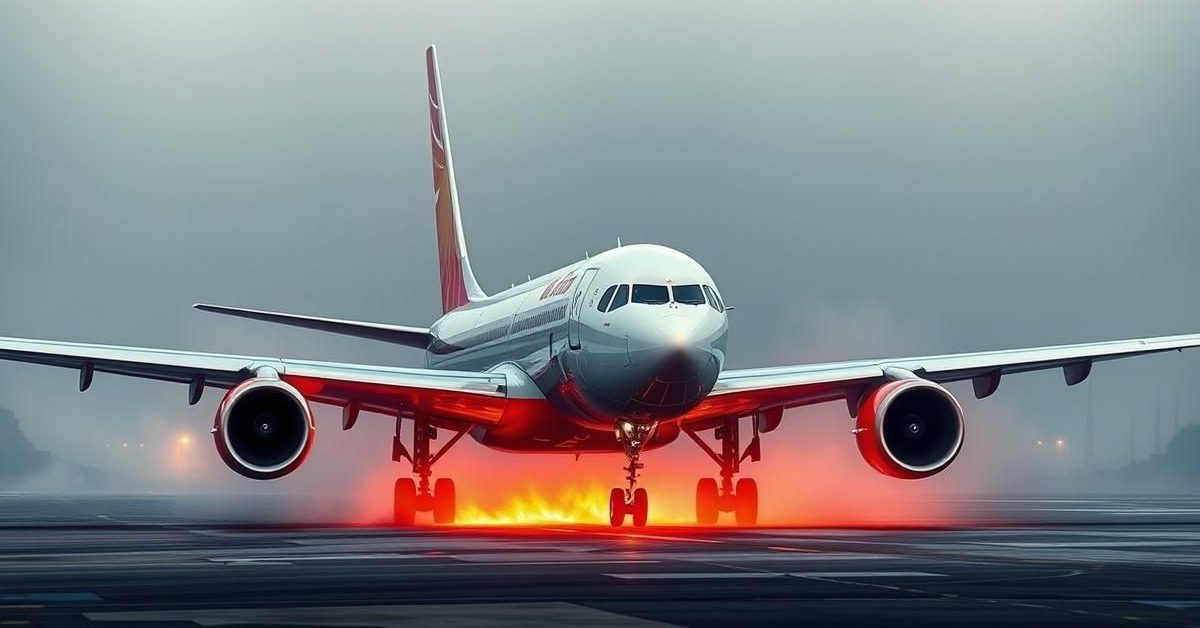An initial report into the recent Air India flight AI 171 crash suggests the engines were starved of fuel after switches moved to the ‘CUTOFF’ position, yet aviation experts warn against jumping to conclusions about pilot error.
Early Findings Point to Fuel Cut-Off
The Aircraft Accident Investigation Bureau (AAIB) has released a detailed 15-page preliminary report on the June 12 crash. It identifies the most probable primary cause: both engine fuel control switches transitioned from ‘RUN’ to ‘CUTOFF’ within a second of each other, shortly after takeoff.
The cockpit voice recorder data reveals a critical exchange: one pilot asked the other why he cut off the fuel, to which the other responded he had not.
Why Experts Urge Caution
Despite these findings, aviation veterans emphasize it’s too early to attribute the crash solely to human error. Civil Aviation Minister K Ram Mohan Naidu and Minister of State for Civil Aviation Murlidhar Mohol have also cautioned against drawing premature conclusions.
“The initial finding that the fuel control switches went to cut-off mode is truly shocking,” stated a former air accident investigator. They stressed that the real investigation is just beginning, aiming to discover *how* and *why* this happened.
Aircraft are complex machines, and accidents rarely have a single cause. Investigations are meticulous, often uncovering multiple contributing factors or a chain of events. The final report is expected within a year, adhering to international guidelines.
The Design of Fuel Control Switches
The AAIB report notes the switches moved to CUTOFF but doesn’t explicitly state pilots manually moved them. Experts confirm that accidental movement of these spring-loaded switches is highly unlikely.
These switches feature protective brackets and a ‘stop lock’ mechanism. Pilots must physically lift them up before moving them between the ‘RUN’ and ‘CUTOFF’ positions. A senior pilot on the Boeing 787 aircraft stated that no sane pilot would intentionally move these switches during a critical phase like takeoff, unless dealing with a dual engine failure, and even then, it would be a coordinated action.
The Airline Pilots’ Association of India (ALPA-I) has expressed concern about a potential bias towards pilot error in the investigation. ALPA-I President Sam Thomas has called for a fair, fact-based inquiry and requested observer status in the probe.
Could System Issues Be a Factor?
Pilots and investigators are also urging a look beyond human action. They question if the fuel cut-off could be due to electrical or system-related issues, suggesting a software malfunction might have signaled the switches were in ‘CUTOFF’ mode without actual physical movement.
The Boeing 787 is known for its extensive electrical systems, making such a scenario theoretically possible. Further analysis of the aircraft’s black boxes will be crucial to determine if the switches were mechanically moved or if another issue caused the cut-off.
Standard operating procedures dictate that pilots keep their hands away from critical switches during takeoff to prevent accidental toggling. The fact that the preliminary report hasn’t issued any immediate recommendations for Boeing 787 operators suggests investigators don’t currently believe an electrical or system malfunction is the primary cause.
While an advisory bulletin from the US Federal Aviation Administration (FAA) in 2018 highlighted potential disengagement of the fuel control switch locking feature, Air India did not implement the recommended inspection as it was non-mandatory. However, the aircraft’s throttle control module was replaced in 2019 and 2023 for unrelated reasons, and no defects with the fuel control switches had been reported since 2023.
- The preliminary report indicates the crash likely stemmed from engine fuel cut-off post-takeoff.
- Aviation experts and ministers caution against immediately blaming pilot error.
- Investigators must explore potential electrical or system malfunctions.
- The mechanical design of the switches makes accidental movement highly improbable.
- A thorough, unbiased probe is crucial to determine the exact cause.
The ongoing investigation aims to unravel the full sequence of events and factors contributing to this complex aviation tragedy.














